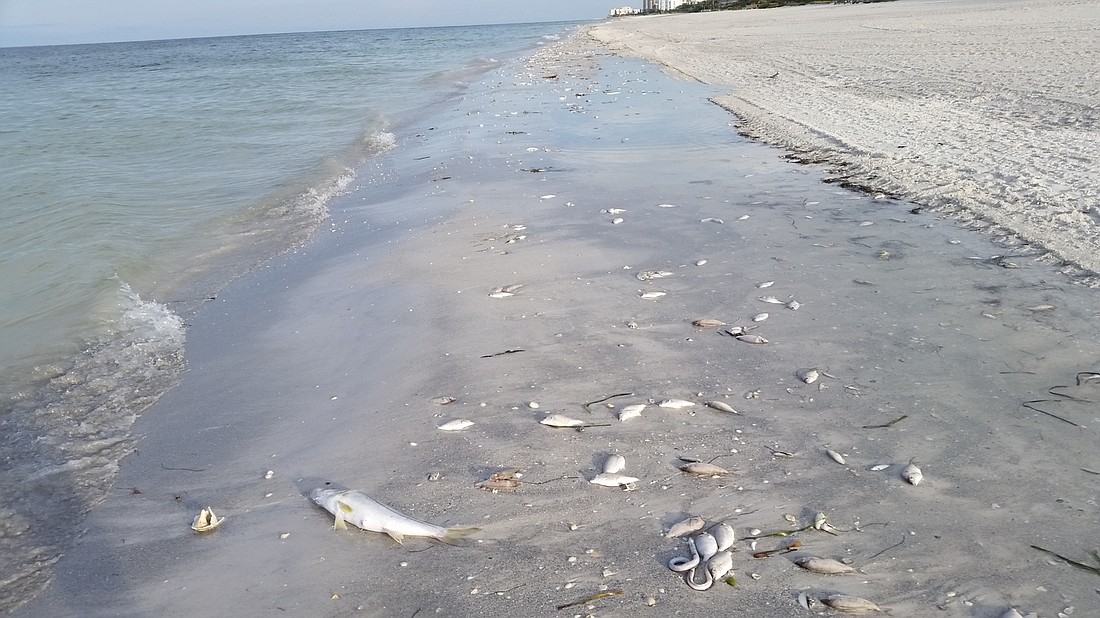- April 23, 2024
-
-
Loading

Loading

From September through April, people living along the coast in Sarasota County dealt with a protracted red tide bloom.
Beyond the usual issues associated with red tide — conditions that can lead to respiratory ailments and the death of marine life — residents took note of what seemed like an unusually long period of high concentrations of Karenia brevis algae.
At the May 5 Siesta Key Association meeting, Mote Marine Laboratory and Aquarium volunteer and Siesta Key resident Tommy Vaughan-Birch explained the history of red tide and the conditions in which the algae can thrive. She addressed residents’ most pressing question about the phenomenon: Are humans making it worse?
The answer is complicated, Vaughan-Birch said. The algae itself is not man-made. The blooms originate 10 to 40 miles offshore, and red tide can be traced back 10,000 years.
But the red tide needs certain conditions to remain in the water. Vaughan-Birch said nutrient availability and water temperature are key factors in triggering a red tide bloom, with the organism preferring warmer conditions. Those at the SKA meeting wondered if run-off into the coastal waters — including discharge from the Siesta Key wastewater treatment facility during Hurricane Hermine in September — is exacerbating the red tide blooms.
Mote’s website says there is “no direct link between nutrient pollution and the frequency or severity of red tides caused by K. brevis.” But that just means that human activity isn’t triggering the blooms. Once the algae is in the water, the presence of nutrients from human pollution can facilitate its growth, Vaughan-Birch said.
“We’re helping — a little bit,” she said.
That also doesn’t necessarily mean the region is doomed to eight-month bouts of red tide forever. The county has regulations preventing the use of fertilizer with nitrogen and phosphorous in summer’s rainy months to cut nutrient runoff into the water. Even without any human contributions, there is plenty of natural nitrogen and phosphorous in the water, two of the 12 different nutrients on which the algae can feed.
“Let’s just say it’s not a picky eater,” Vaughan-Birch said.
One of the reasons residents are asking questions about red tide is because scientists are still searching for many answers regarding the algae. Mote has five programs focused on red tide. The laboratory is examining possible solutions for the blooms, though it’s difficult to find something that would target just the problematic algae.
“That’s where the rub is,” Vaughan-Birch said. “We have things that kill it. Bleach will kill it — but it kills everything else, too.”
Mote is also working to help increase public awareness regarding red tide outbreaks. The laboratory’s Beach Conditions Reporting System shares daily updates on the conditions at more than 30 beaches in southwest Florida. Mote is developing an app that will let people report signs of red tide when they encounter it in real time.
While there may not be satisfactory solutions for red tide-related issues now, scientists at Mote are dedicated to doing what they can to unravel the remaining mysteries behind Karenia brevi